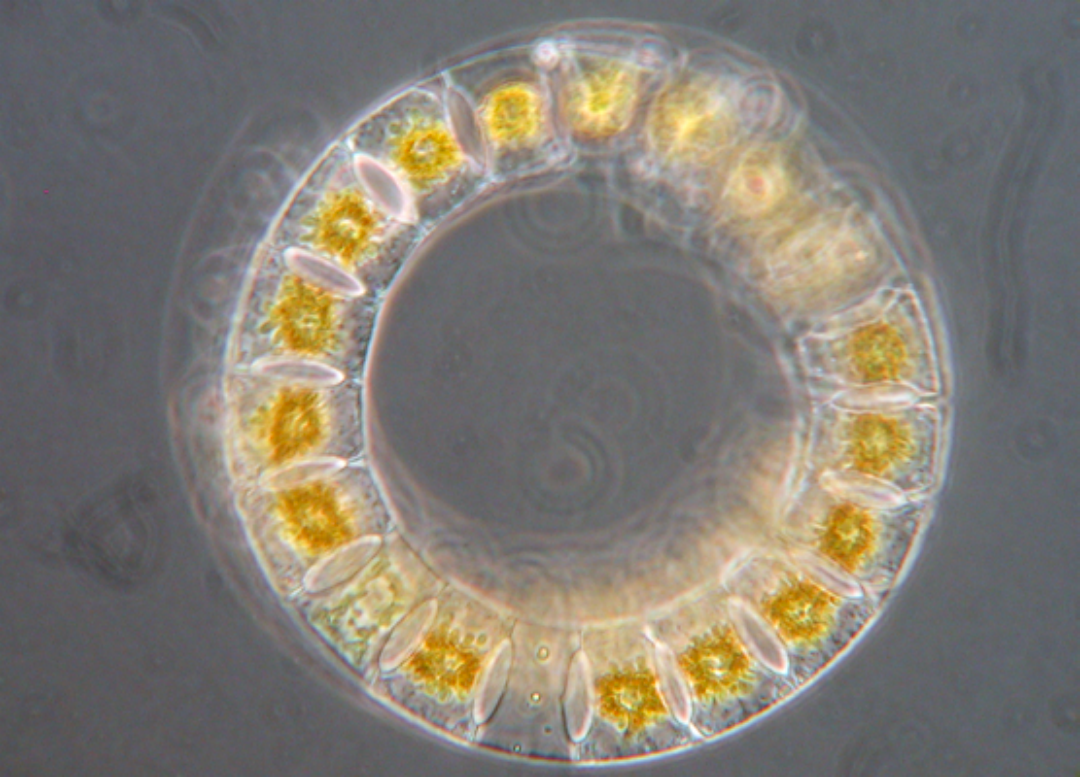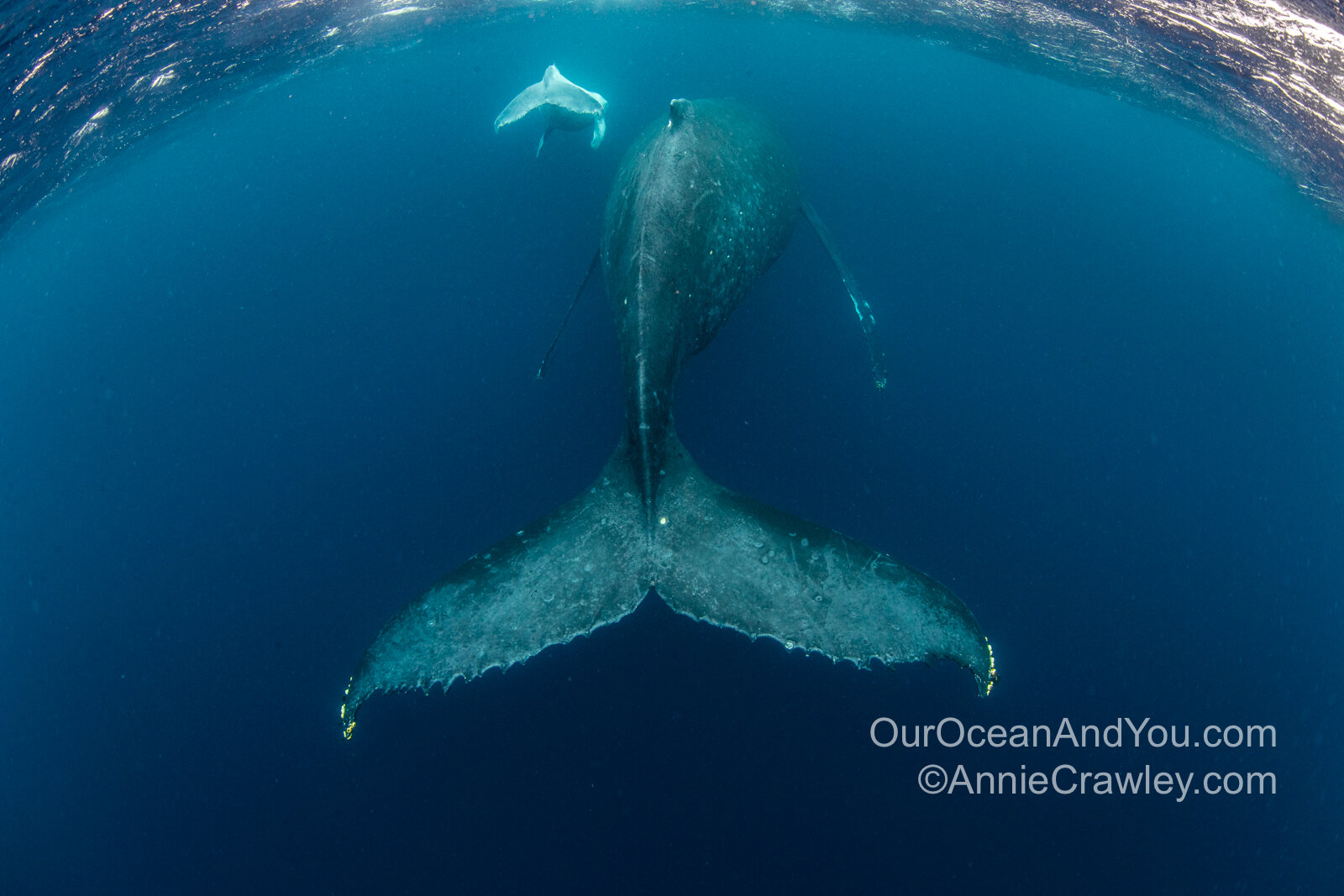Phytoplankton Coloring the Emerald Sea Green
Have you ever wondered why the Salish Sea is so green? Also called the Emerald Sea, this cold water is characteristically green thanks to tiny micro-organisms called phytoplankton. As primary producers, phytoplankton are responsible for creating more than half of the oxygen we breathe. Like plants, they use photosynthesis to convert sunlight and carbon dioxide into energy and oxygen. Phytoplankton are the foundation of the ocean food chain and support life throughout the world. There are 5000 known species of phytoplankton.
Phytoplankton exist throughout the world, but the Salish Sea is rich with these photosynthesizing organisms. Since they need light to survive, phytoplankton are found in the top portion of the ocean where light can penetrate water, called the photic zone, usually within the first 200 meters of water. They thrive in the presence of nutrients which come from deep-ocean upwellings. Thanks to the geology of the inland water system of the Salish Sea, constant upwellings of highly nutrient water promotes phytoplankton growth here.
Phytoplankton are tiny but mighty: you need a microscope to see them. Washington Sea Grant created a beautiful guide to phytoplankton including the two most important groups, diatoms and dinoflagellates, in the Salish Sea. Let’s dive into the different categories of phytoplankton.
Chaetoceros debilis (Diatom). Cells 8-40 micrometers wide. Courtesy of Kathleen K. Newell, University of Washington (2009).
One major group of phytoplankton is diatoms, a marine alga living in a house of glass. They are unicellular, meaning each diatom is made of just one cell (the human body has over 30 trillion cells!) Diatoms have a cell wall made of silica (glass), which makes them robust and beautiful to look at under a microscope.
Diatoms are often described by their shapes which exhibit some sort of symmetry. Scientists are always discovering new species, and it’s estimated that there are possibly 2 million species of diatoms in existence (1). The highly diverse diatoms are both beautiful and important. Microscopists (someone who views things through a microscope) make art out of diatoms that look like kaleidoscopes. Leave it up to the experts to create art with subjects 500 times smaller than a millimeter.
The word “diatom” may sound familiar, because of “dynamite”. This is no coincidence—dynamite is made of fossilized diatom cell walls called diatomaceous earth. This powdery, naturally occurring sediment is commonly used as a fine filter because of its porous nature. Diatoms have been around for billions of years and are one of the oldest life forms.
Ceratium lineatum (Dinoflagellate). Cells 30-60 micrometers long. Courtesy of Kathleen K. Newell, University of Washington (2009).
This category of phytoplankton describes a group with flagella, strands of protein that whip around and provide movement. Dinoflagellates have two flagella, and sometimes opposite movement causes them to spin around in circles (2). These phytoplankton are most commonly known for their symbiotic relationships with corals, anemones, and sponges as zooxanthella. Many dinoflagellates have the ability to photosynthesize and some produce their own light through a process called bioluminescence. In summer, you can find bioluminescent dinoflagellates throughout the Salish Sea at night. It’s an amazing sight. They proliferate in the summer with warm temperatures and sunshine, often referred to as “blooms”. This can also be caused by runoff which brings a high amount of nutrient fertilizer into the water. Divers know these blooms result in poor visibility underwater, but they can also harm marine animals. Certain dinoflagellates produce neurotoxins that infect fish and shellfish, and the rapid die-off of this algae boom pulls oxygen away from the water, killing nearby animals.
For the most part, however, phytoplankton is extremely beneficial to life underwater and on land. Human-made fertilizers induce harmful algal blooms, but natural fertilizers are the key to promoting helpful phytoplankton growth. The best natural fertilizer? Whale poop. As whales travel into deep water for food, they circulate nutrients from the deep-sea to shallow water by their poop, fertilizing shallow water. Phytoplankton trap atmospheric CO2 and turn it into breathable oxygen. When the phytoplankton die, they sink to the bottom of the ocean with the carbon they captured, trapping it for thousands of years. Phytoplankton are the key to mitigating global warming caused by the increase in atmospheric CO2. Arguably, they are the most important organisms on the planet!















Sources:
Guides Copyright 2009 University of Washington. Photos and design by Kathleen K. Newell, School of Oceanography.

